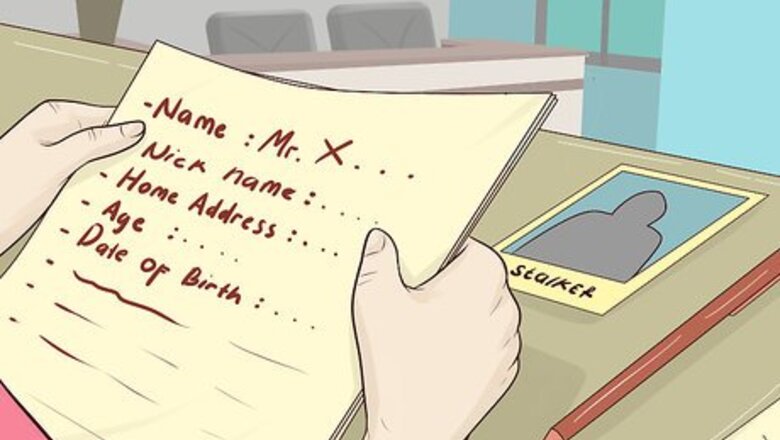
views
X
Research source
- To collect evidence, take photos of your stalker, save their messages, keep gifts they send you, record things they say about you on social media, and keep notes on your interactions.
- Put your safety first by not sharing personal details on social media, changing your social media login credentials, and keeping your loved ones updated on the situation.
- To file a restraining order, fill out forms and submit them to your local family court.
Collecting Evidence of Stalking

Gather information about your stalker. You don't just need to be able to prove that the person is stalking you. You'll also need enough information about the person so the police can identify that person and bring them to justice. Write down everything you know about the person stalking you, including their full legal name, any aliases, and a description of the person. You should also write down any location information you have, including where they live and where they work or go to school. If there are particular locations they are known to frequent, such as restaurants, cafés, or bars, write those down as well. Include any contact information you have, such as the person's email address, phone number, and handles on messaging services or on social media. All of this information can help police identify them and track them down. If you don't have a lot of information about the person, don't reach out to them to try to get that information. They might perceive your questions as an indication that you are interested in them, or that their behavior is welcome.Tip: Finding information about your stalker can be particularly difficult if the person isn't known to you, which might be the case if they are stalking you online. Just focus on getting as much information as you can without putting yourself in danger.
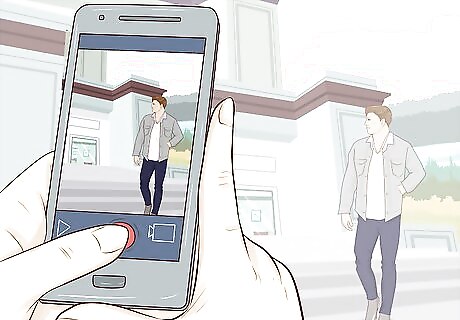
Take pictures of the person following you. If someone is following you in person or frequently showing up at places where you are, take a picture of them with your smartphone if you can do so without them knowing. These photos can be used to prove the pattern of the person stalking you. Don't include instances in which the person might have a reasonable purpose for being in that location. For example, if the person stalking you also happens to work in the same building as you, or goes to the same school, photos of them around work or school don't necessarily prove that they're stalking you – they have an independent reason for being there.
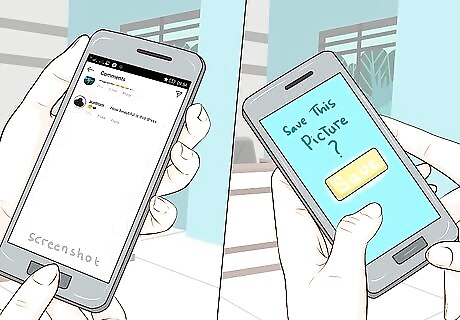
Keep all messages or comments sent on social media. To prove stalking, you need to be able to prove a pattern of behavior – a few isolated incidents aren't sufficient. If the person stalking you is sending you messages online or commenting on your social media posts, all of them together can go towards proving that the person is stalking you. Take screenshots to preserve the messages, in case the person later deletes them or deletes the account they were using. If the person is using multiple accounts to stalk you, do what you can to prove that the same person is controlling all of the accounts. This may be difficult (if not impossible), but commonalities between the accounts, such as the same display photo, may serve as clues.Tip: If necessary, law enforcement can find out who controls social media accounts by talking to the website that hosts those accounts. Just focus on getting the information you need.

Save any unwanted gifts the person sends you. Stalkers often send gifts to their targets to attempt to show their love or encourage the target to let their guard down. As tempting as it may be to throw these things away or destroy them, you need to keep them as evidence of the stalker's behavior. Your stalker may try to ingratiate themselves to you by sending you things they know you want or would enjoy – especially if they're someone you used to have a close relationship with. Resist the temptation to keep or use these gifts. Ideally, you shouldn't even open gifts if they are sent in sealed packages, particularly if your stalker boxed them up themselves – they may contain forensic evidence, such as fingerprints or stray hairs, that police can test and use to identify your stalker.
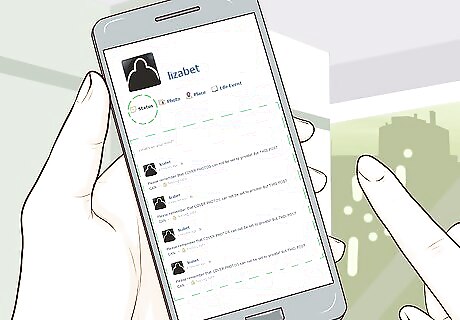
Monitor your stalker's social media for things they may say about you. Many stalkers will talk about the person they're stalking on social media. They may be trying to elicit sympathy from others, turn people against you, or convince others of their love for you. These sorts of posts may alternate with posts about what a horrible person you are for not giving them the attention they believe they deserve. All of these posts can be used as evidence to prove you are being stalked. As with comments or posts they make on your social media, make screenshots of the posts in case your stalker later deletes them. Frequently, stalkers will make these posts and only leave them up for a short period of time, until they're confident you've seen them, and then they'll delete them. If this is something that's too painful or disturbing for you to do yourself, enlist a trusted friend or family member to do it for you.

Use caution when blocking a stalker online. Social networking sites will typically advise that you block someone who is harassing you on their services. However, if you block a stalker you will not be able to see anything they post, which could mean you miss out on valuable evidence of their stalking. If the person is making comments that annoy you, consider staying off social media and giving your log-in information to a trusted friend or family member. They can make screenshots of the messages without you having to be exposed to them.

Keep a diary of incidents that includes dates, times, and locations. Write down as many facts as you can about each stalking incident as soon as possible after the incident occurs, while the details are still fresh in your mind. Include everything you remember about the incident, even if it doesn't seem relevant. For example, if your stalker confronts you at a grocery store near your home, you might write down the date, time, name of the grocery store, location of the grocery store, and aisles where your stalker confronted you. Make note if your stalker went out of their way to confront you or follow you. For example, they may have appeared at a location that was a good distance away from where they live and work, or at an hour when they normally are sleeping or otherwise engaged. This demonstrates the person is obsessed with you. Police departments, domestic violence shelters, and victim services agencies often have forms you can use to record incidents so that you know you're getting down all the information you need. For example, the New South Wales Police Force in Australia has a form you can copy available at https://www.police.nsw.gov.au/crime/domestic_and_family_violence/what_is_stalking.
Protecting Yourself from a Stalker

Change the usernames and passwords of all online accounts. If your stalker could access any of your online accounts, changing your usernames or passwords can keep them out. This is especially important if you previously had a romantic relationship with the person stalking you, or if they're a member of your family. If you believe the person is monitoring or has access to your computer, change your usernames and passwords from a secure computer that they couldn't access. If it's possible that the person stalking you also has keys to your house, you should also change the locks on all of your doors.

Get a new phone if you suspect the stalker is monitoring your phone. A new phone or new phone number may eliminate the possibility that your stalker is keeping track of who calls or texts you, or even listening in on your phone calls. If you have a phone through work, talk to your employer about getting a new phone. Emphasize the security risk that comes from this person having access to your phone and all of the information that is sent and received.Tip: If phone security is a serious concern for you, consider getting a pre-paid "burner" phone. That way, if your stalker gains access to your phone, you can simply throw it away and get a new one.

Use alternate routes to get to work or school. If your stalker is following you, taking different routes can keep encounters to a minimum. Try to switch up your routes every other day or so. that way you don't give them time to learn your new route. If you live in an area with a robust public transportation system, alternate routes may be easier. Simply get off on a different stop, or ride out to the other side of the city and then take a different train. If your stalker knows your car, you might consider having a friend or family member drive you to work or school. You could also consider renting a car for a few days to throw your stalker off your trail.

Tell friends and family about your stalker. If you believe that you are being stalked, it's important not to keep that information to yourself – even if you might find it embarrassing to bring up. Your friends and family need to know the person is stalking you so they won't inadvertently reveal information about you that could put you in harm's way. Discretion and tact are important if you're talking to someone who is a mutual friend. In that case, calling the person a stalker may not be the best way to go about it. Instead, you might say something like "Dave and I are having some ongoing personal issues right now. I would appreciate it if you didn't talk to him about me." When talking to someone who isn't friends with your stalker, you can typically be a little blunter. You might say "Carol is threatening me and won't leave me alone. If she asks you about me, please don't tell her anything. I just want her to leave me alone."Tip: If you're talking to a friend or family member who is also friendly with your stalker, keep in mind that anything you say to them may get back to your stalker. Don't say anything you wouldn't want your stalker to know you said.
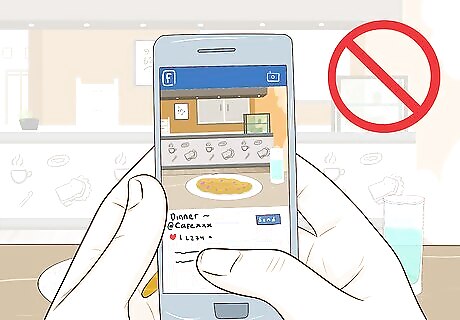
Avoid posting personal information on social media. If your stalker can view your social media accounts, they can learn a lot of information about where you are and what you're doing. When you post photos, they may be able to identify your location from details in the photos or geotracking information in the photo files themselves. Adjust your privacy settings so no one can tag you in a photo without you reviewing it first. If you and your stalker have mutual friends, tell those people not to post pictures of you – or better yet, don't go out with them. Tell your friends not to tag you in posts, particularly if the post involves events you plan to attend or other arrangements. Make your plans in private, not on social media.
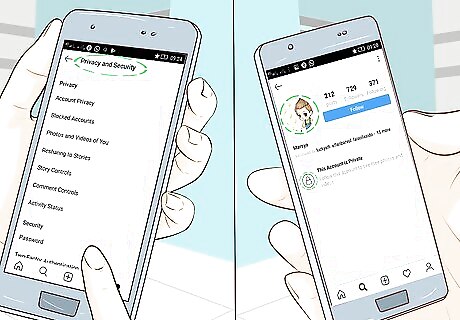
Take advantage of security and privacy settings. Security and privacy settings on social media and other online accounts afford you some measure of protection against stalkers. Lock down your account so that no one but close friends and family members can see your posts. You might also be able to temporarily change your screen name so your stalker can't find you or identify you as easily. If at all possible, change your profile picture to something that doesn't show your face. Enabling two-factor authentication can keep your stalker from accessing your account, even if they can figure out your username and password. With two-factor authentication, you'll get a code sent to your email or mobile phone that you have to enter before you can log into your account. Always log out of your accounts when you're not using them. While it may be more convenient to leave them up if you access them throughout the day, staying logged in gives your stalker an opportunity to potentially access your account.
Requesting a Restraining Order
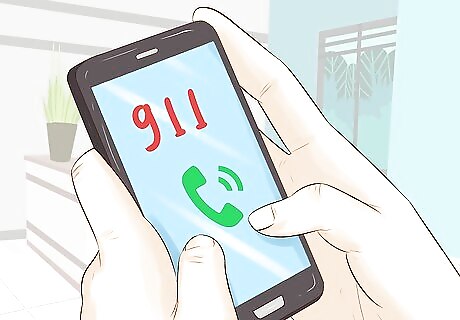
Call the police emergency number if you feel you are in immediate danger. If your stalker is local to you and is threatening to harm you or your loved ones, call an emergency number, such as 911 in the US, immediately. Give the operator your name and location, and tell them that you've been threatened and feel your life is in danger. If you know the approximate location of your stalker, let the operator know that as well. They can dispatch a police officer to intercept your stalker. Make sure you're in a safe place before you call, if at all possible. For example, if your stalker can access your home, you may want to go to a friend or family member's house. Do everything you can to get out of harm's way.

Contact a local crisis hotline or victim services agency. Domestic violence hotlines, shelters, and victim services agencies have resources to help keep you safe if you're being stalked. They will help you even if your stalker isn't a family member or former romantic partner. In the US, you can call the US Victim Connect Hotline at 855-4-VICTIM. A directory of domestic violence hotlines for every country in the world can be found at http://www.hotpeachpages.net/a/countries.html.
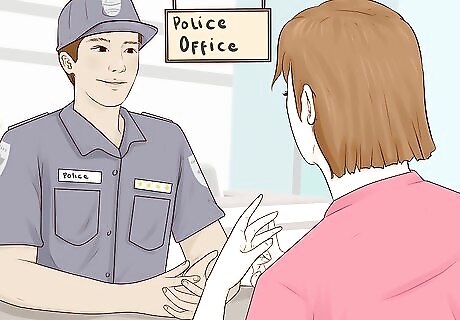
Visit your nearest police precinct during the day. If you want to report your stalker to law enforcement but aren't in any immediate danger, file a report in person. Bring any gifts, photos, messages, or screenshots with you. In some areas, you may be able to get an emergency protective order from the police department immediately. This emergency order will only be in effect for a limited period of time, typically a few days – just enough time for you to get to court and file for a full restraining order. Keep in mind that if your stalker is online and not local, the ability of the local police to do anything will be limited. However, it's still a good idea to file a police report so they're aware of your situation and that you may be in danger.
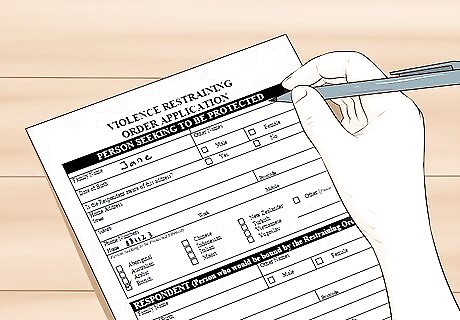
Fill out forms to apply for a restraining order. If your stalker is local and is harassing or threatening you, getting a restraining order can keep them away from you. Once the restraining order goes into effect, your stalker will be prohibited from contacting you or showing up at your home, work, or school. In public, they are not allowed to get within a certain distance of you. The forms to apply for a restraining order are fairly straightforward. You can get them from the clerk's office of your local family court, and the clerk may be able to help you fill them out properly if you have any questions. Restraining order forms are also typically available at domestic violence shelters and victim services agencies. While court employees and volunteers at shelters or victim services agencies may be able to help you fill out your forms correctly, they are generally unable to give you legal advice. If you have an open court case involving the person who is stalking you, talk to an attorney before you file for a restraining order.Tip: In some places, restraining orders may not be available unless your stalker is someone related to you, or someone you previously had a romantic relationship with. The court clerk or staff at a shelter or victim services agency will be able to tell you if you can get a restraining order against your stalker.
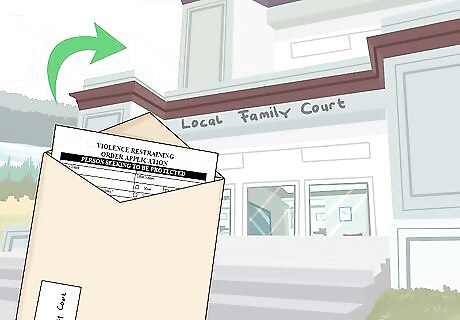
Submit your forms to your local family court. Typically, a judge will issue a temporary restraining order immediately after you file your forms. Your stalker will be served with a copy of your forms and have the opportunity to defend their actions in court before the permanent restraining order is issued. In many countries, including the US, there are no filing fees or court costs for a restraining order and you don't need to be represented by an attorney.
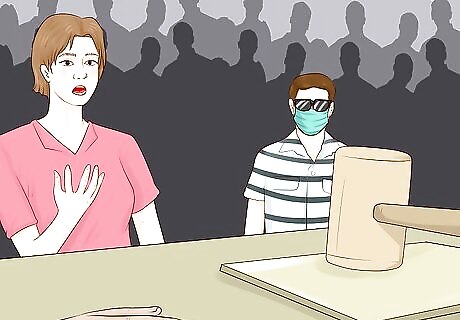
Appear in court to get your restraining order. If you want a permanent restraining order, you typically must appear before a judge and tell your side of the story. Your stalker will be notified of the hearing and also have an opportunity to tell their side of the story. While it can be stressful to potentially be in the same room as your stalker, court security will keep you safe. If you're worried about confronting your stalker, you can also bring a friend or family member along with you for moral support. Once you have your restraining order, your stalker can be arrested and charged with a crime if they come near you or contact you in any way.




















Comments
0 comment